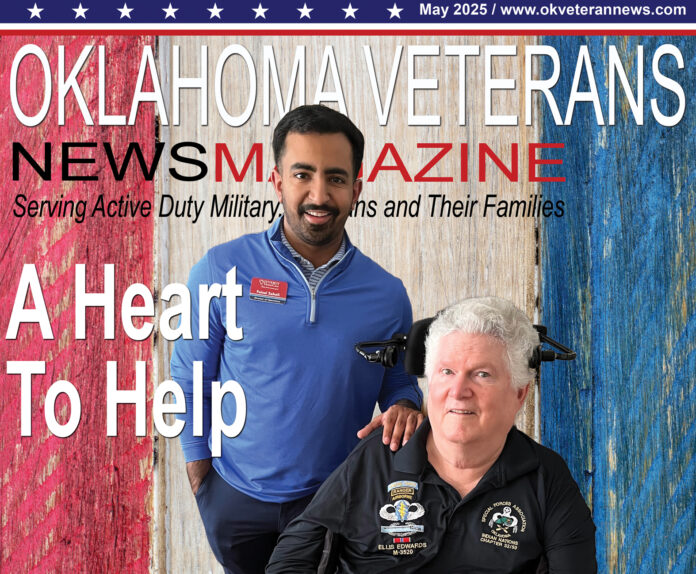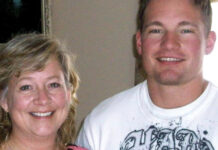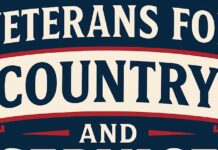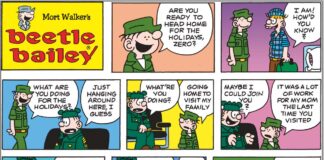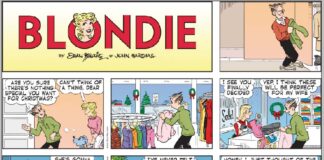Edwards followed his heart to help the others during and after Vietnam War.
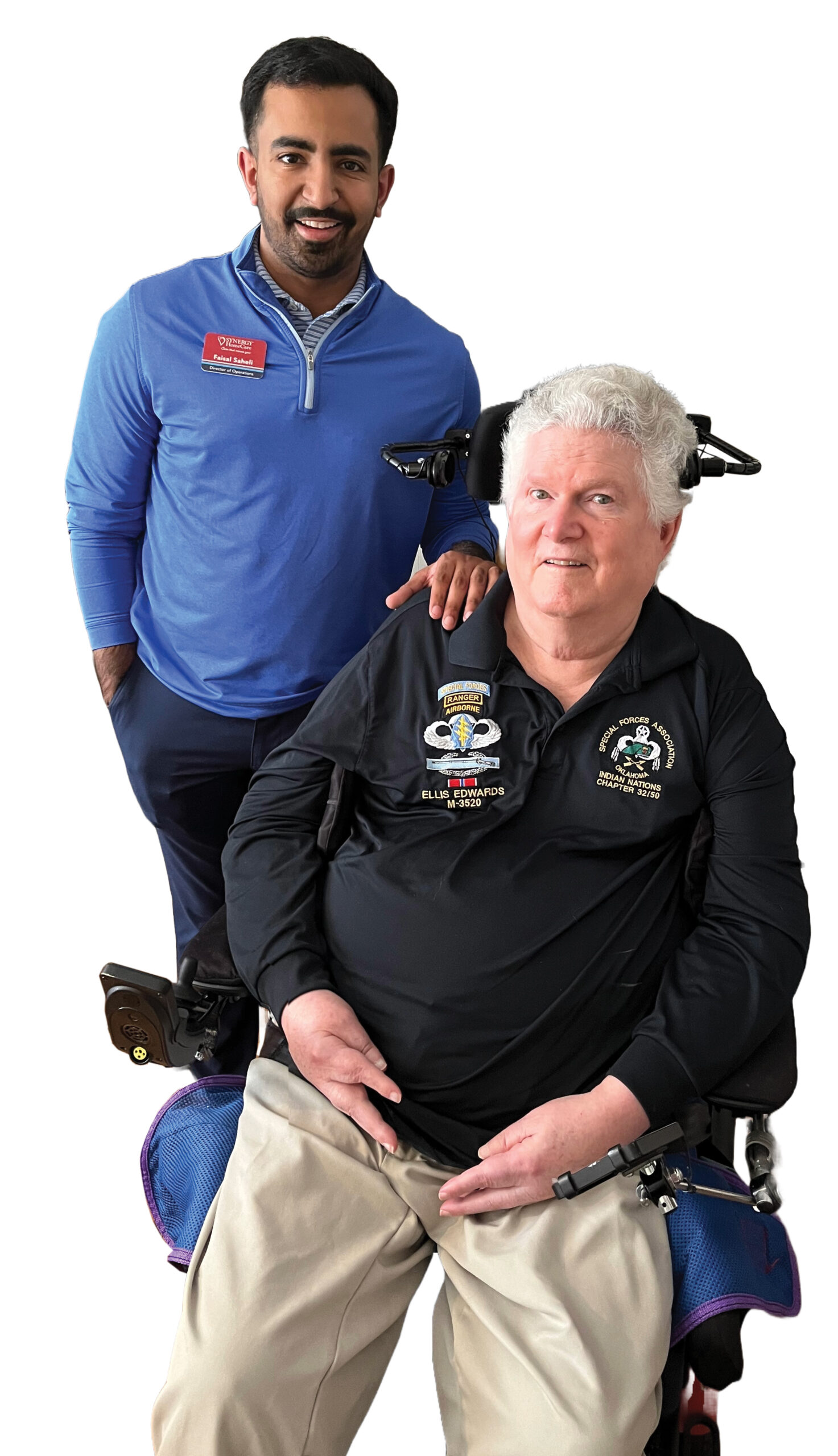
Ellis Edwards has been a Veteran Home Care client of SYNERGY HomeCare since May 2019.
He and his wife have been very grateful for the extra help they’ve been able to receive and have grown to view their caregivers as an extension of family.
His wife, Thao, said “SYNERGY is doing a great job to accommodate Ellis’ needs. They are a good company, especially to our veterans. Our caregivers are always there to help him, and it’s been such a relief for us.” The entire team is grateful to be able to serve the Edwards family and are honored to recognize his incredible service to our nation.”
Edwards might not see himself as a hero, but there are others that might dis agree with the Bronze Star Medal and Combat Infantry Badge recipient and a member of the Oklahoma Military Hall of Fame.
Edwards, 77, has made a difference in peoples’ lives both during and after the Vietnam War.
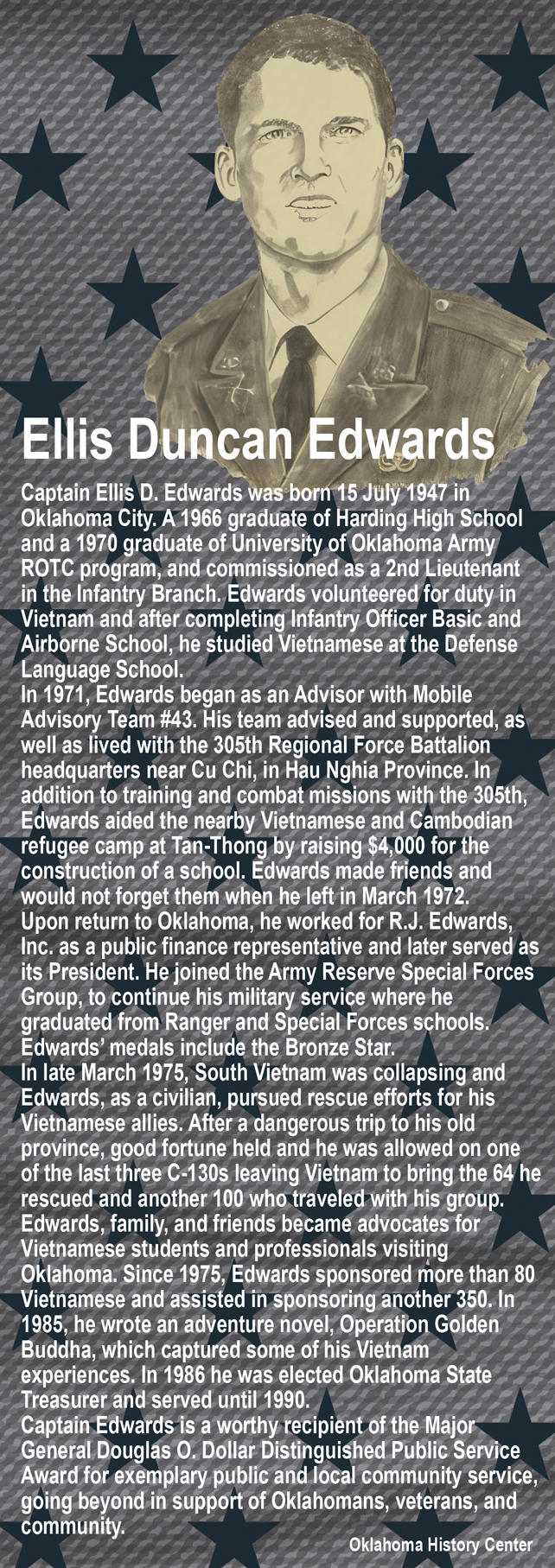
He rescued 64 American allies when the Republic of Vietnam was falling to the North Vietnamese. In 1970, he was a second lieutenant in the infantry. He volunteered for the Republic of Vietnam for duty in Vietnam. He was promoted to Captain because of that rescue mission.
As an advisor, Edwards was aware of the instability of the South Vietnamese government. He promised his comrades that, in the event a communist takeover was imminent, he would return and help them escape. Edwards took this commitment seriously.
“I knew that I could do something,” Edwards said. “That was my Christian duty.”
Following his return from Vietnam and his release from his active duty, Edwards joined Operational Detachment 212, Company A, 2nd Battalion, 12th Special Forces Group (Airborne) in Oklahoma City.
While working as a financial bond advisor, completing a master’s degree and serving in the Special Forces Reserve, Edwards closely monitored the Vietnam War, remaining in touch with his friends.

On January 3, 1975, Edwards suffered a serious injury on a night parachute jump with the Special Forces Unit, fracturing vertebrae in his back. The injuries eventually caused his retirement from the Army.
In March of 1975, South Vietnam was quickly collapsing. The North Vietnamese had started their push to destroy the remaining South Vietnamese military, and vast areas were falling into the Communists’ hands. Many soldiers abandoned their posts and fled in panic. The highways were clogged with columns of tanks, armored personnel carriers, artillery pieces and trucks loaded with soldiers.
Remembering his promises, Edwards planned an emergency return to the war zone to rescue as many as he could.
At his own expense, Edwards flew first to New Orleans where he obtained an expedited passport, flying on to Washington D.C. where he received a visa from the South Vietnamese embassy, then flying to Saigon.
Edwards returned at the very moment that Communist forces were overrunning the country, exposing him to great personal danger.
The South was within weeks of capture and the whole country was in a state of pandemonium.
Further complicating matters, Edwards was in pain throughout his mission. He said his back injury required him to wear a brace, and he was constantly in need of unavailable physical therapy.
Despite his pain, Edwards diligently set about contacting those in harm’s way. Most of Edwards former counterparts were located on the Cambodian border in a province there, where heavy fighting was taking place.
Edwards found and hired a taxi driver who originally agreed to take him to that area.
As they traveled through the countryside, however, there were Communist roadblocks, which barely managed to evade.
When the driver refused to go any further, Edwards produced his only weapon, a pistol and told the shaken man that he had no choice but to continue.
They reached the area where Edwards found his former unit and the individuals whom he had advised. From both that province and Saigon, Edwards rounded up 64 people seeking to escape.
When it was time for Edwards to return to Saigon, however, the taxi had gone. Having no other transportation, Edwards was left with the unbelievable option of taking a public bus through enemy-held territory.
He said was lucky that the Communists caught a Republic of Vietnam officer who was riding a bus shortly behind him and hanged him.
Back in Saigon, Edwards then had to address the problem of how to get the refugees out of the country.
In a misguided effort to keep South Vietnam from collapsing, the US government initially refused to evacuate Vietnamese nationals, and the American ambassador attempted to prevent Vietnamese citizens from leaving.
Edwards was required to not only deal with the Vietnamese onslaught, but he was also hampered by non-cooperation from the American embassy.
Ever determined, Edwards resorted to unconventional tactics to accomplish his plan. He first found a South Vietnamese air force pilot who accepted $25,000 to fly the refugees to Thailand.
At the last minute, however, the US government changed its policy, and Edwards was able to convince the Air Force to devote an airplane to his refugees. Although he never recovered the $25,000 paid to the pilot, he now believes that expenditure was worth it.
Before leaving on one of the last military flights out of Vietnam, Edwards helped all those he could.
Among them were six Vietnamese women, each of whom Edwards “married” before the fall of South Vietnam.
Edwards managed to talk his way into the American embassy where, in the chaos, he found the empty office of an American general who had already been evacuated. He used his fortress to gain access to people who can help him get the refugees out. At one point, he even posed as a congressional staffer.
While in Saigon, Edwards was attacked on the street by an unknown assailant. The incident involved gunfire, and Edwards was shot by the assailant.
Once the refugees reached US soil, Edwards did not abandon them.
In fact, he sponsored more than 200 refugees in Oklahoma, finding them places to live, obtaining jobs, enrolling children in school, acquiring household furnishings, obtaining driver training licenses and automobiles.
The refugees who came to Oklahoma have successfully been part of the state. They have businesses and professions.
In 1998, Ellis and his wife Thao Edwards invited a young teenage girl who had been raised under the Communist regime in Vietnam to live in their home and attend Bishop McGuinness High School in Oklahoma City.
The girl’s mother was unable to support her, and she asked Edwards for help. After a successful semester at McGuinness, Edwards managed to get the girl accepted into the Oklahoma School of Science and Math. Upon high school graduation, she received a full scholarship to Mount Holyoke University, which she finished in three and a half years with double majors.
The summer of 2010, Edwards invited a Vietnamese college student to stay at his house, helping him with acquiring tuition for about a year. The young man went on to St. Bernard’s Seminary and School of Theology. He was ordained June 30, 2018.
“I’ve helped a lot of people, and I gave them (help with a new life in the United States),” he said.
Edwards also helped raise funds from private sources to build a much-needed grade school in Vietnam. He personally ramrodded the project to completion only to hear that the Communists demolished it after his departure.
Thao Edwards said her husband of almost 49 years has a heart of gold. “He’s extraordinary. He can do the things that normal people don’t do,” she said. story by Van Mitchell


